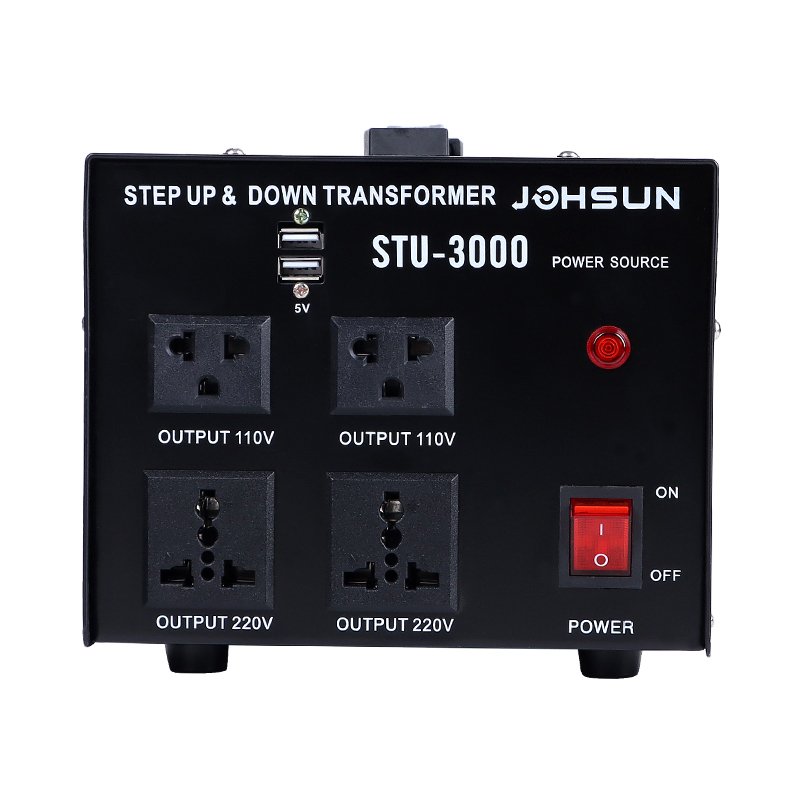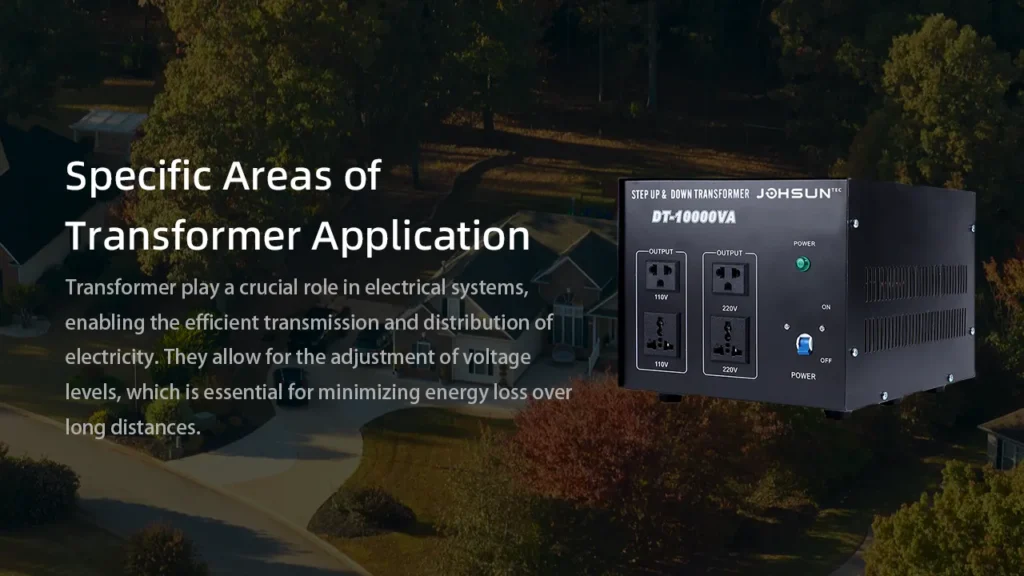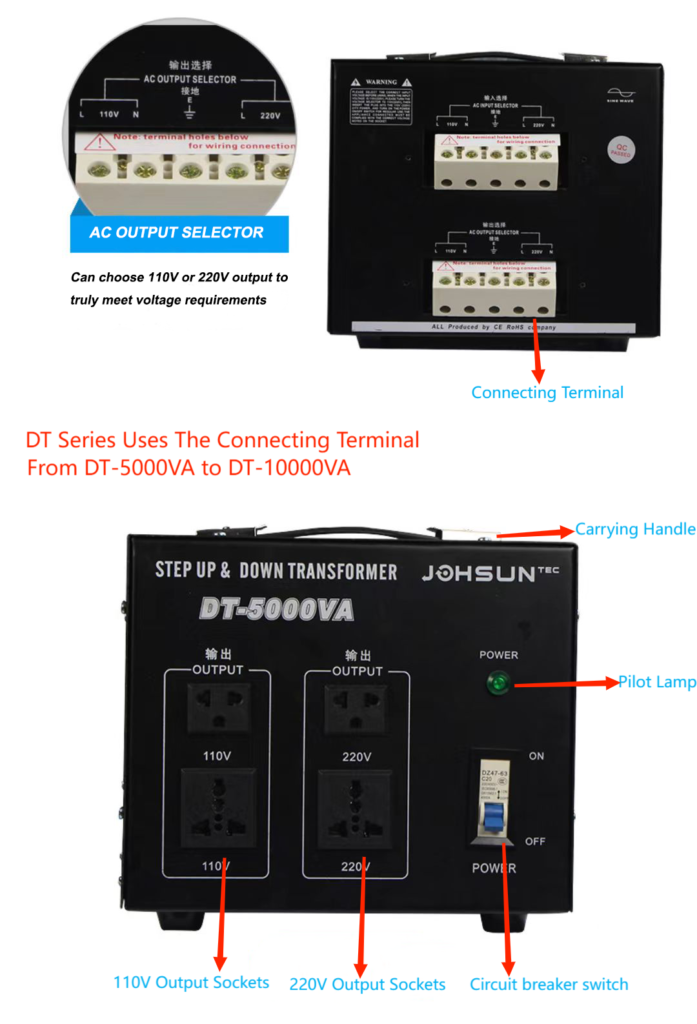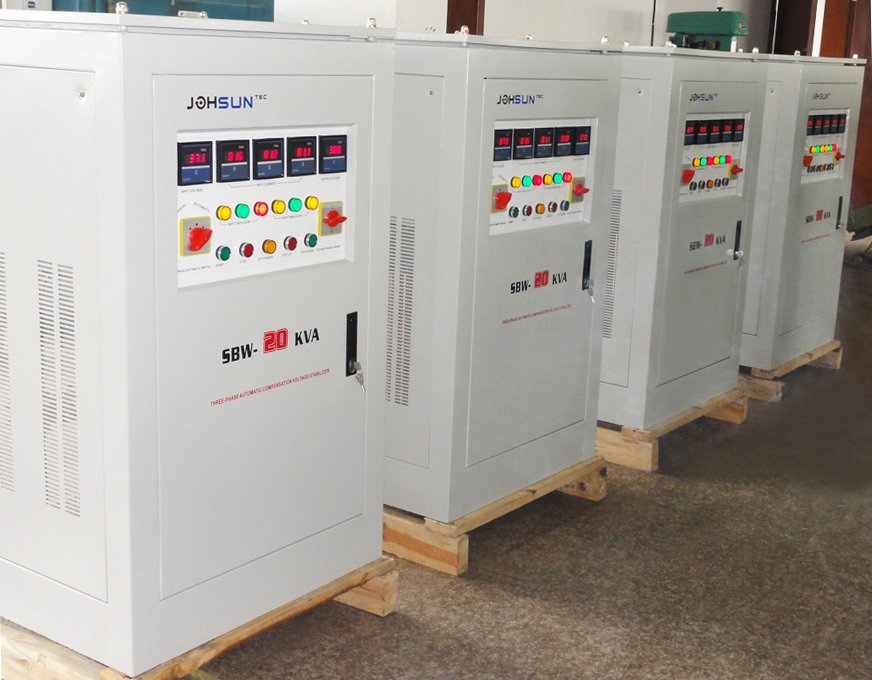Why Are Transformer Rated in kVA
Why Are Transformer Rated in kVA?
Transformer are rated in kilovolt-amperes (kVA) rather than kilowatts (kW) due to the nature of their operation and the uncertainty regarding the types of loads they will serve. This rating reflects the apparent power, which encompasses both real and reactive power. Here’s a detailed explanation of why this approach is used:
Apparent vs. Real Power
- Apparent Power (kVA): This is the total power in an electrical circuit, combining both real power (used to perform work) and reactive power (stored and released by inductive and capacitive elements). It is the product of the circuit’s voltage and current without considering the phase angle between them.
- Real Power (kW): This is the actual power consumed by the load to perform useful work. It considers the power factor, which is the cosine of the phase angle between voltage and current.
Transformers are rated in kVA because they must handle both real and reactive power. The actual power factor of the load connected to a transformer can vary widely, depending on whether it is resistive, inductive, or capacitive.
The Importance of kVA Ratings
Improving Efficiency and Safety
Selecting a Boost and buck equipment with an appropriate kVA rating ensures that it operates within its thermal limits, preventing overheating and potential damage. This consideration is crucial because a transformer’s efficiency and safety are closely tied to its ability to manage heat generated during operation.
Adapting to Diverse Applications
Suitable for a wide range of applications, from residential step-down to high power demands in industrial environments.The kVA rating provides a flexible metric that accommodates different load types without needing specific knowledge of their power factors.
Meeting Future Needs
Selecting electrical equipment with a rated voltage slightly higher than current requirements provides flexibility for future expansion or load changes. This foresight can prevent costly replacements or upgrades as needs increase.
How to Calculate the Required kVA Rating
To determine the appropriate kVA rating for a transformer, consider these factors:
- Load Voltage (V): Identify this from electrical schematics.
- Phase Current (I): Determine this from schematics or calculate it by dividing input voltage by input impedance.
- Apparent Power Calculation: Use the formula kVA=V×I1000kVA=1000V×I for single-phase systems or kVA=3×V×I1000kVA=10003×V×I for three-phase systems.
- Consider Power Factor: If known, divide the calculated kilowatts by the load’s power factor to get the required kVA.
Matching kVA Rating with Application Scenarios
Load Demand Analysis
- Determine Load Capacity: Calculate based on actual system requirements.
- Consider Future Growth: Opt for a slightly higher kVA rating if future demand increases are anticipated.
Power Factor and Efficiency
- Impact of Power Factor: Ensure sufficient active power delivery even at low power factors.
- Efficiency Standards: Select transformers meeting efficiency standards to reduce costs and comply with regulations.
Voltage Level and Transmission Loss
- Voltage Level Selection: Higher voltage levels can reduce transmission losses but may increase equipment costs.
- Cost and Equipment Requirements: Devices with higher voltage levels generally require more expensive equipment and facilities, so it is important to strike a balance between reducing losses and controlling costs.
Environment and Application Type
- Environmental Conditions: Choose transformers suited for specific environmental conditions like temperature and humidity.
- Application Scenario: Select based on specific needs, such as industrial durability or residential cost-effectiveness.

Common Applications for Transformer by kVA Rating
Low kVA Ratings (Up to 25 kVA)
- Residential and Light Commercial Use: Typically used in residential areas and small commercial locations where electricity demand is relatively low. They are ideal for powering lighting systems, household appliances, and small HVAC units.
- Encapsulated Transformer: Often used in environments where protection from dust and moisture is necessary, such as outdoor installations or areas with high debris.
Medium kVA Ratings (25 to 500 kVA)
- Commercial and Industrial Applications: Medium-sized transformers are commonly found in larger commercial buildings and industrial facilities. They support equipment like elevators, larger HVAC systems, and machinery that require more power than residential setups.
- Ventilated Transformer: Suitable for indoor environments where air circulation can help dissipate heat, these transformers are often used in industrial settings.
- Totally Enclosed Non-Ventilated Transformer: Ideal for harsh environments with significant dust or moisture, protecting the internal components from contamination.
High kVA Ratings (500 kVA and Above)
- Large Industrial Facilities: High kVA transformers are crucial in heavy industries such as manufacturing plants, refineries, and large data centers. They handle substantial power loads required by heavy machinery and extensive operations.
- Power Transmission Networks: These transformers are used to step up or step down voltage levels across transmission lines, facilitating efficient long-distance electricity distribution.
- Distribution Transformer: Found in utility networks to distribute electricity to various sectors, including residential, commercial, and industrial areas.
Specialized Transformer
- Isolation Transformer: Used to separate different parts of a network for safety reasons or to reduce electrical noise. Their kVA ratings vary depending on the specific isolation requirements.
- Autotransformer: These have adjustable kVA ratings due to their design with a single winding that serves both primary and secondary functions. They are used where variable voltage transformation is needed.





